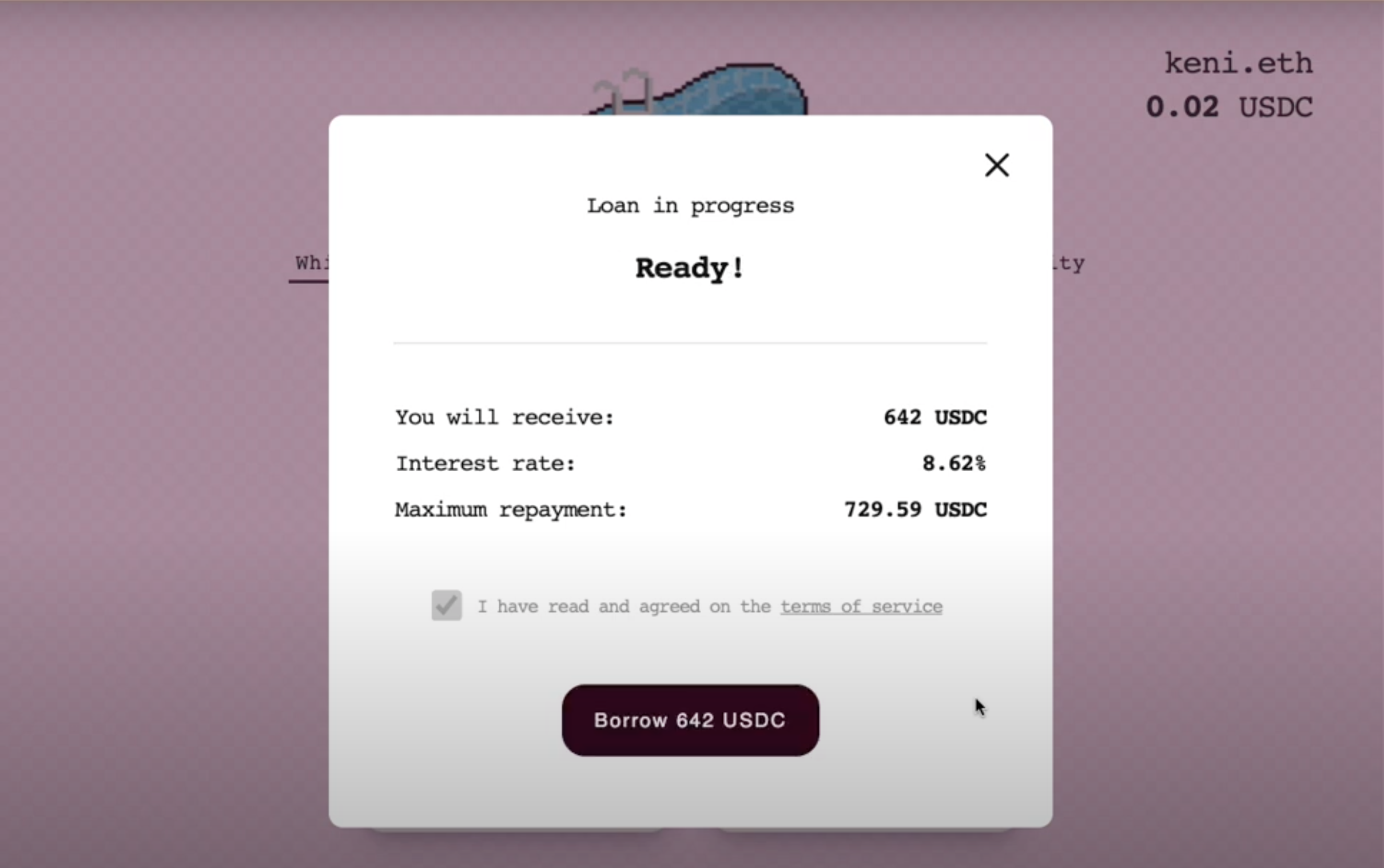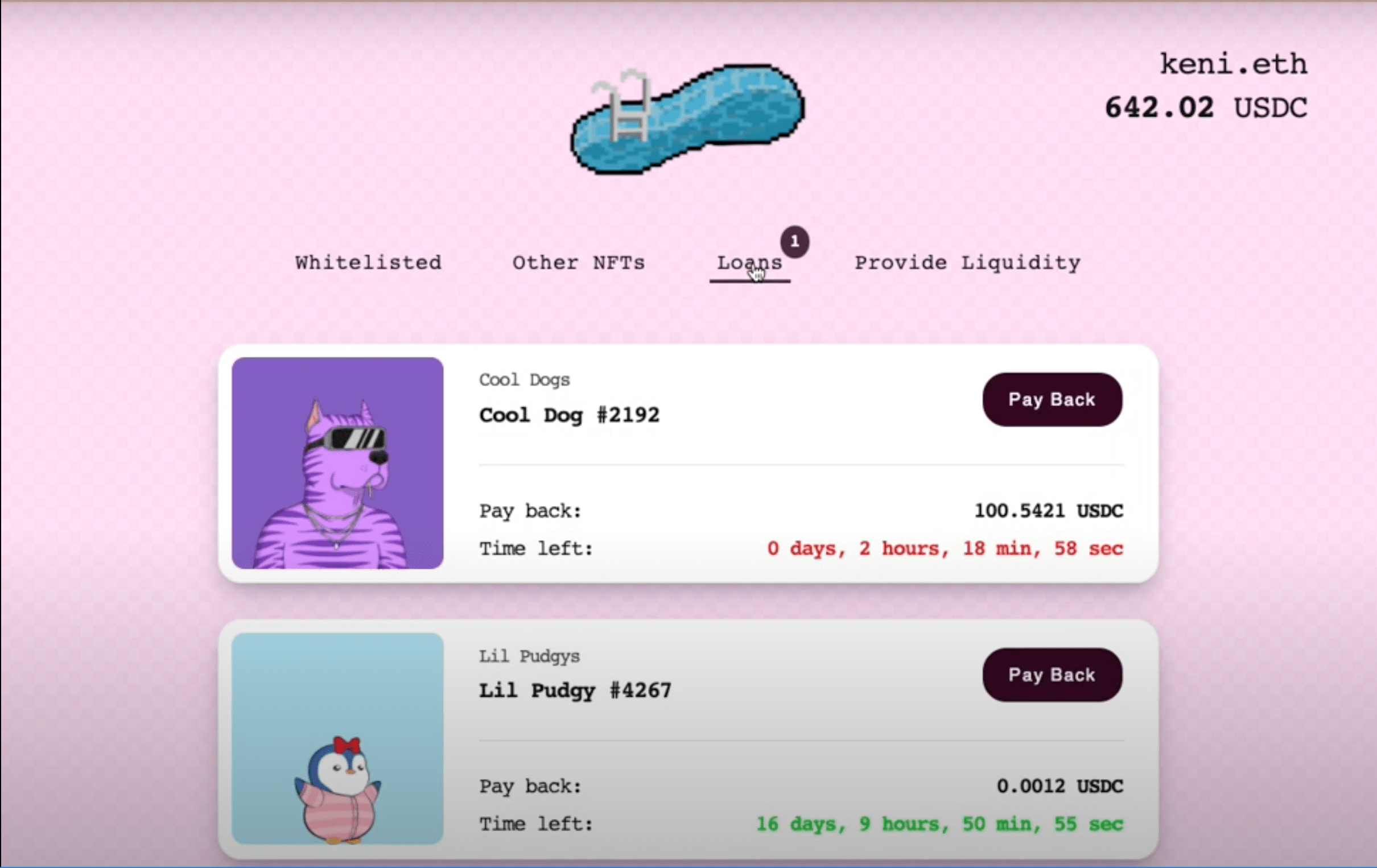PoolFi
Collateralized & instant borrowing protocol working with NFT collections of all sizes and trade volumes.
PoolFi
Created At
Winner of

🥇 Best use of Circle

🥉 Best use of Harmony

🏊♂️ Harmony Pool Prize
Project Description
PoolFi is a borrowing and lending protocol with NFT as collateral operating with a wide NFT collection range (not only the most liquid).
-- Problem -- It’s difficult to leverage financial value from owning an NFT. Only the biggest NFT collections can be used as collateral with protocols such as NFTx, NFTfi or JPEG’d.
-- Solution -- PoolFi disrupts this paradigm by operating with a wider range of NFT collection thanks to an innovative mechanism mitigating the liquidation risk. It's a multi-chain protocol. All the NFTs are gathered in the same pool so liquidity is not fragmented but shared. Borrowing is immediate, efficient, easy, without health factor or liquidation risk thanks to an innovative pool mechanism. A lender deposits USDC into a pool with a variable APR and an end date. A borrower comes to deposit one or more NFTs depending on the pool's collections. He receives for each NFT a predefined number of USDC. This price is initially determined by the team with sufficient leeway depending on the collection. Then the user must repay the loan plus interest before the deadline. In case of non-repayment, the unpaid NFTs go into a Dutch auction process where the proceeds are transferred to lenders.
-- Vision -- We believe that in the near future, NFT owners will increasingly want to leverage values from their collection. Current solutions accepting only top project such as Crypto Punks or Bored Apes prevent the democratization of this new yield. Our vision is to operate with all class of NFTs, including real world tokenized assets. We then want to involve the community in the signaling of new collections and implement a mechanism to regularly evaluate the value of an NFT. Ideally, we would like to allow borrowing with all types of NFTs, including the rapidly growing securities tokens. After severals iterations, lenders and borrowers will be able to come and go at any time, in a pool with no expiration date. Collateral ratios and whitelisting of assets would be defined by community and market.
We want PoolFi to become the largest pawn shop of web3 by onboarding mass market to NFT related DeFi.
How it's Made
The PoolFi Dapp consist of one smart-contract, deployed each time we want to make a pool. We use the pool model to increase liquidity for a large variety of NFT assets, several collections sharing the same supplied liquidity in the contract. Because the pool has an expiration date, we envision to create one pool per chain every two weeks. With a lifetime of 1 month, there is always a pool available to borrow from that does not require to repay before at least two weeks. It also permits to update collateral ratios according to market conditions regularly.
The contract is made in solidity and tested using hardhat. We used scaffold-eth as a boilerplate.
Contract can be found deployed:
-
On Polygon Mumbai: https://mumbai.polygonscan.com/address/0x8ad5434c48b2979f17a5d9d2af377d07b17d760e#code
-
On Harmony Testnet: https://explorer.pops.one/address/0xcd89eebe6d5fd988fe1c4cfe596c5be7431f7d74?activeTab=7
The pool contract of this POC has a lifecycle of 4 phases :
-
Contract is deployed. Deployer chooses the dates of the phases. Deployer also choses a list of NFT collections and a collateral ratio for each of them. Deployer also specifies a fixed interest rate for borrowers. During this phase, suppliers can deposit USDCs in the contract.
-
After the start date, suppliers cannot supply anymore. Borrowers can get instant loans according to the predefined collateral ratios. Loans can be repaid at any time during this phase.
-
After the expiration date, loans cannot be repaid anymore. NFTs collaterals of loans that weren't repaid are sold in a dutch auction, all proceeds are for suppliers.
-
After the dutch auction ends, lenders can withdraw their investment and profits 🙂
A front-end makes the protocol easy to use, it is made with react + useDapp and hosted on IPFS. ( https://ipfs.fleek.co/ipfs/QmU9jAegCTS7Zx2uRJb26nRtBftU5rnuVE9ah9nSriH5oS/ )
We used fleek.co for the upload process.
The frontend displays the ENS of the user using useDapp. ENS is also envisioned to be used in an upcoming leaderboard.
For extra safety, the deployer can stop the creation of new loans, and resume them. In any case, supplies, repays, sells and withdrawals stay unaffected. We use the OpenSea API to monitor market conditions and automatically stop the ability to borrow when the market price of whitelisted collections approach their predefined collateral ratio. This prevents the pool to be drained of its liquidity after a sudden market drop.




